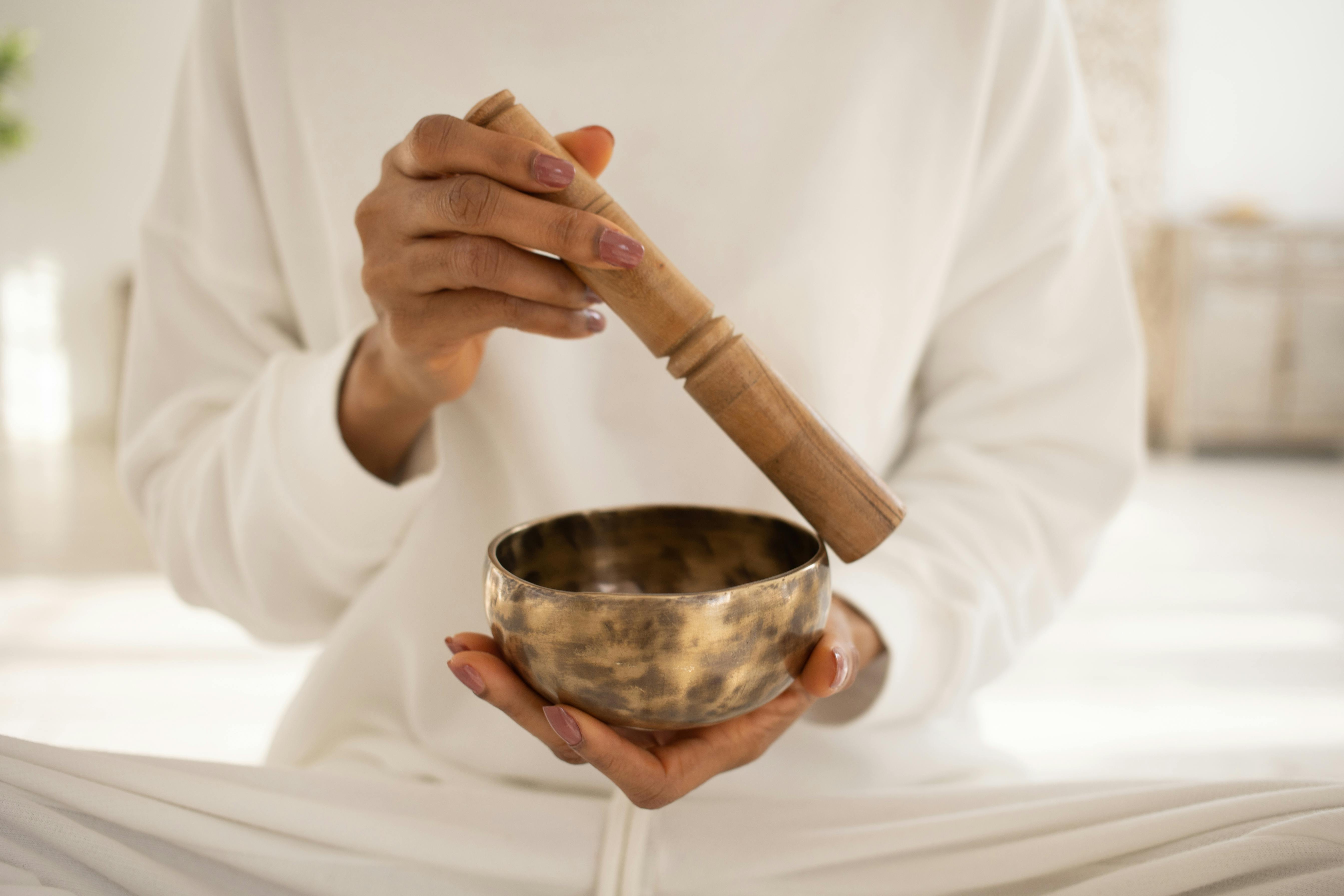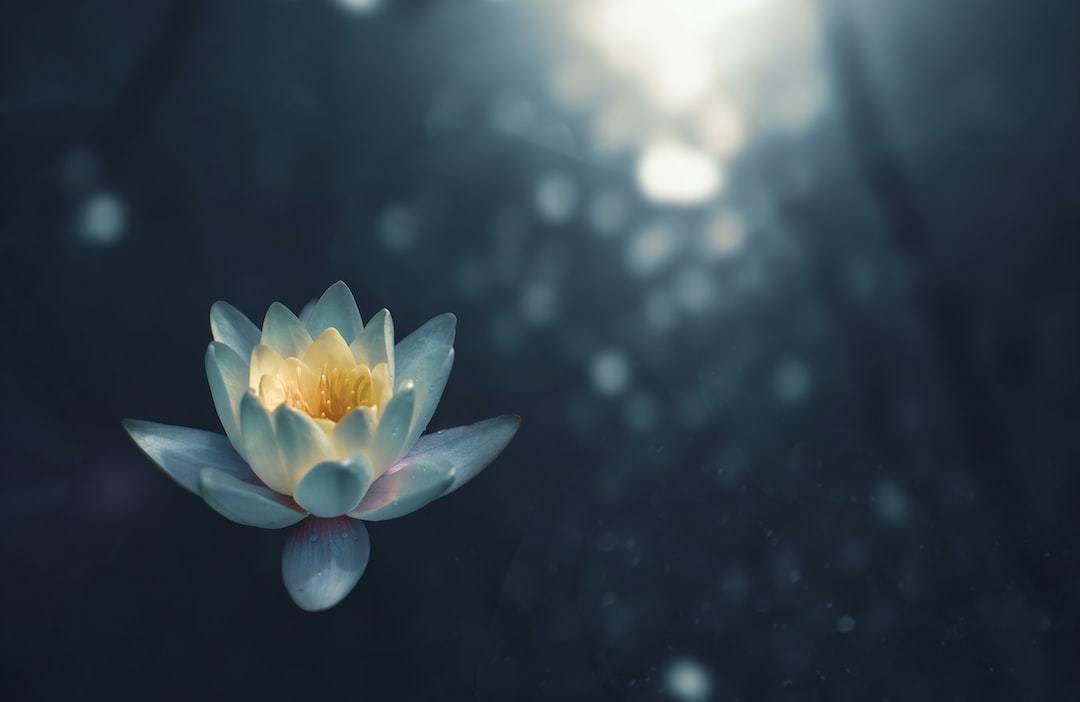Coming Soon: E-book about Kundalini Yoga - Sign up here to be among the first to get it!
 Imagine yourself in a yoga studio, prepared to experience something extraordinary. The class? Tantra Yoga.
Imagine yourself in a yoga studio, prepared to experience something extraordinary. The class? Tantra Yoga.
As the session starts, you realize it’s not your typical asana sequence or pranayama practice. There’s an air of mystique and profound depth that makes every breath feel like a step closer to enlightenment.
This isn’t just another type of yoga; it’s an ancient spiritual journey through postures, breathing exercises, and meditation techniques designed for deeper self-discovery and transformation.
Suddenly everything clicks into place – this is what a true yogic experience feels like!
Stick around if you’re intrigued by tantra yoga but unsure about how to get started or what it involves. We’ll dive into its history, philosophy, and practices together. Plus, we’ll clear up any confusion surrounding the sexual aspects often linked with tantra.
Table Of Contents:
- What is Tantric Yoga?
- The History and Philosophy of Tantric Yoga
- The Techniques and Practices in Tantric Yoga
- Tantric Yoga and Sexuality
- My favorite books about Tantra
- How to Practice Tantric Yoga
- The Benefits of Practicing Tantric Yoga
- The Role of Breathwork in Tantric Yoga
- Integrating Tantric Yoga into Your Daily Life
- FAQs about Tantric Yoga
- Conclusion
What is Tantric Yoga?
Tantric yoga, often referred to as tantra yoga or traditional tantra, offers a unique blend of physical and spiritual practices. But what exactly does it entail?
Drawing from ancient Vedic and yogic spiritual traditions, tantric yoga places emphasis on the body as an instrument for exploration and enjoyment rather than renunciation. This form of practice incorporates elements such as tantra, classical tantra techniques, breath work (pranayama), meditation exercises, and energy cultivation.
This holistic approach sets tantric yoga apart from other forms of exercise-focused classes. It’s more than just adopting specific postures or performing breathing exercises; it’s about engaging with your own body in a deeply personal way.
The Body-Spirit Connection in Tantric Yoga
In this transformative journey, practitioners delve into the depths of their being by weaving together mind-body-energy connections – thus fulfilling the essence behind its Sanskrit name ‘Tantra’, which translates to ‘weave’.
Rather than viewing these components separately like some conventional hatha yoga methods do, tantrics believe that our physical bodies are intertwined with our subtle energy bodies. By harnessing this connection through active participation in class settings or solo practice at home, we can tap into our innate power source for healing and self-discovery.
A Pathway To Enlightenment
Beyond fitness benefits alone – although they certainly exist. – the regular practice of Tantra yoga has been linked with an increased capacity for mindfulness leading toward spiritual enlightenment.
An integral part of Tantra involves breaking down barriers between external world experiences and internal emotions allowing us not only to understand ourselves better but also to cultivate compassion for others around us too.
A Misunderstood Practice
Despite its rich spiritual heritage, tantric yoga has been somewhat misunderstood due to the Western focus on sexual practices. It’s important to clarify that while tantra does incorporate elements of sacred sexuality, it is not exclusively about this aspect.
It is a pathway for individuals seeking profound experiences beyond the superficial, offering tools to explore and embrace their inner universe in profound ways.
An ancient tool to find greater emotional balance. Through tantric yoga, we can also experience a deeper connection with ourselves and the world around us. This form of yoga not only strengthens our bodies, it also nurtures our minds, allowing for more peace and clarity in everyday life.
The History and Philosophy of Tantric Yoga
Tantric Yoga stands at the intersection of spirituality and physicality. Rooted in the esoteric teachings of Tantra, which emerged in medieval India, Tantric Yoga transcends the conventional understanding of yoga as merely physical exercise.
Historically, it developed as a response to the ascetic traditions prevalent in early Hinduism and Buddhism, offering a more inclusive path to spiritual liberation. Philosophically, Tantric Yoga embodies the principle of embracing all aspects of human experience, including the physical body, as a means to achieve enlightenment. This was quite a rebellious view for that time and quite a revolutionary teaching that was moving away from abstention and the renunciation of the body and the senses.
It challenges the dualistic view of the material and spiritual worlds, proposing that the divine is present in everything, including the mundane!
Practices in Tantric Yoga include not just physical postures and breath control, but also the use of mantras, meditation, and rituals to awaken the dormant Kundalini energy at the base of the spine, believed to be a direct path to higher consciousness.
This holistic approach integrates the body, mind, and spirit, offering a transformative and expansive view of human potential.
Hatha Yoga’s Origin from Tantra
A key historical aspect of tantric yoga is its significant contribution to the development of hatha yoga. Contrary to the common perception of hatha yoga as primarily a physical exercise, its origins trace back to the intricate and holistic system of tantra. This connection underscores the depth and richness of hatha yoga, revealing its origins not just as a form of physical activity, but as an extension of a profound spiritual tradition that intertwines the physical with the metaphysical, enhancing the understanding of the body’s potential in achieving spiritual enlightenment. The roots of hatha yoga in tantric practices highlight its purpose beyond physical fitness, emphasizing its role as a medium for spiritual exploration and self-discovery.
The Meaning of Tantra
“Tantra” derives from the Sanskrit word for “weave”, hinting at how this form integrates various yogic techniques into a cohesive whole. Its primary aim? Spiritual enlightenment through energy connection.
Tantra’s Evolution Over Time
In today’s fast-paced world, many see tantra solely in terms of sexual practices or intimate relationships. But delve deeper into the philosophy behind traditional tantra, you’ll discover it goes beyond carnal connections and explores realms both cosmic and spiritual. Let’s take a look at the two main Tantra practices.
You may come across terms like ‘red tantra’ or ‘white tantra’, each representing different aspects and approaches to spiritual growth.
Red Tantra
- Focus: Red Tantra primarily emphasizes the use of sensual and sexual energy as a path to spiritual awakening. It involves practices that harness sexual energy to elevate consciousness and achieve a higher state of being.
- Practices: These may include controlled sexual rituals, breathwork, and meditations, often performed with a partner. The goal is to transcend physical pleasure and use the energy generated through intimacy to strengthen the spiritual connection between partners.
- Philosophy: It views sexual energy as a powerful force that, when properly harnessed, can lead to deep spiritual insights and a profound sense of connection with the universe.
- Misinterpretations: This body of practice is often misunderstood and misrepresented in popular culture, Red Tantra is not solely about sexual gratification. It’s a deeply spiritual practice that uses sexuality as one element in a broader spiritual journey.
White Tantra
- Focus: White Tantra is more focused on individual spiritual practices. It emphasizes personal discipline, meditation, and the cultivation of pure, subtle energies within the body.
- Practices: These often include solo meditations, chanting, breathwork, and specific bodily postures. The practices are designed to purify the mind and body, leading to higher states of consciousness and spiritual awakening.
- Philosophy: The philosophy behind White Tantra is centered around the development of personal purity, mental clarity, and a direct connection with the divine or the universal consciousness, independent of external stimuli.
- Community Aspect: White Tantra is often practiced in groups, where collective energy and intention can amplify the meditative and transformative experience.
Both Red and White Tantra offer paths to spiritual growth, but they differ significantly in their practices and focus. Red Tantra uses the dynamic and powerful energy of sexual and sensual experiences as a conduit for spiritual enlightenment, often involving a partner. In contrast, White Tantra focuses on individual discipline and purification through meditation and other solo practices. Each path, within the broader context of Tantra, offers unique insights and methodologies for exploring spirituality and consciousness.
Note: Always remember to verify your facts before practicing any new discipline – whether that be Kundalini Yoga or something else entirely.
The Techniques and Practices in Tantric Yoga
Tantra yoga is a dynamic practice, weaving together several techniques to enhance energy flow.
These methods extend beyond the physical body, reaching into our subtle energy bodies for deep transformation. Click here if you are interested in learning more about the subtle bodies.
Asanas in Tantric Yoga
In tantric yoga, specific postures are used for cultivating energy. These include hatha yoga asanas that work on your core strength and flexibility while enhancing your spiritual connection.
Similarly to Kundalini yoga, familiar poses like twists and backbends can be part of this yogic technique but often with eyes closed to heighten inner awareness. This combination helps one deepen their practice through direct experience of each posture’s energetic effects.
Breathwork and Meditation
Pranayama or breath work plays a crucial role within Tantra Yoga practices. It aims at controlling the life force (prana) within us using breathing exercises that affect both our physical body and subtle energy systems. Yoga Journal’s guide on Pranayama provides more insight into these vital tantra yoga techniques if you’re keen to delve deeper.
Meditation plays a crucial role in tantra practice, helping practitioners to truly connect with their inner selves. It fosters peace and clarity even amidst the hustle and bustle of daily life. Whether you prefer guided meditation or quiet contemplation, there’s an approach that fits your needs perfectly. Want to learn more? Check out Chopra Center’s article on Tantra Yoga which beautifully explains its all-embracing nature.
Tantric Yoga and Sexuality
A common misconception paints tantra as solely focused on enhanced sexuality or prolonged pleasure. But that’s not quite accurate.
In reality, while there are indeed sexual practices in tantra yoga, they’re far from being its sole focus. Instead, these intimate exercises serve as one method among many for energy cultivation and spiritual growth.
Sacred Sexuality Within Tantra
This doesn’t mean we should entirely disregard the element of sacred sexuality in tantra either. Sexual union can be seen as a physical metaphor for divine union between Shakti (the feminine principle) and Shiva (the masculine principle).
Rather than focusing on orgasm alone, these rituals seek to use the potent energies stirred up by arousal towards achieving greater spiritual awareness – what some might term ‘sexual transmutation‘.
My favorite books about Tantra
Explore Tantra Practices

If you are interested in reading more about Tantra and Kundalini, “Kundalini: Tantra Yoga in Practice” is a valuable resource for those interested in exploring the practical aspects of Kundalini and Tantra Yoga. Its emphasis on experiential learning, combined with clear instructions and safety guidelines, makes it a useful guide for anyone looking to embark on or deepen their journey in these spiritual practices. The book bridges the gap between ancient wisdom and contemporary practice, making these powerful yogic techniques accessible to a modern audience.
Dive deeper into Tantra Philosophy

“Tantra Illuminated” is a thorough and insightful work on Tantra. It offers listeners a deep dive into this profound tradition, balancing scholarly rigor with accessibility. Christopher D. Wallis succeeds in shedding light on the true essence of Tantra, moving beyond stereotypes to reveal its rich philosophical and spiritual depth. This book is a valuable resource for anyone interested in understanding the full spectrum of Tantra’s legacy and its application in the contemporary world.
How to Practice Tantric Yoga
Finding the right tantra yoga teacher is the first step in your journey to practice this ancient technique. A qualified instructor can assist in the development of fundamental postures, respiration techniques, and meditative activities that are at the center of this practice.
Finding Your Rhythm in Class
In a traditional tantra yoga class, silence takes precedence over music. This helps foster an environment conducive to introspection and deepening one’s practice.
The focus here isn’t just on mastering physical postures or asanas but also delving into breath work – an integral part of tantric practice – which aids energy flow within the body. As each practitioner moves at their own pace guided by their internal rhythms rather than solely following the teacher’s instructions; freedom and strength are cultivated simultaneously.
Cultivating Personal Practice Outside Classes
Apart from attending regular classes, incorporating elements of tantric teachings into your daily routine is beneficial too. Meditative techniques like ‘eyes closed’ contemplation can be practiced solo fostering improved sleep quality while augmenting overall well-being.
This could involve dedicating some quiet time every day toward meditation or focusing on conscious breathing even during mundane tasks like washing dishes, commuting to work, or walking meditation. If everything in our lives is an opportunity for meeting the divine, the invitation here is to bring more conscious awareness and presence in every aspect of our day-to-day life.
Maintaining Consistency & Patience
Tantra requires consistency above all else since it’s more about gradual transformation than instant gratification. While beginners might not immediately feel energized after their first few sessions due to subtle changes in different energy bodies, with regular tantric practice you’ll likely notice an increased capacity for peace and inner strength.
Persistence is key. So whether it’s trying out new yoga poses or exploring deeper aspects of Tantra like white tantra or red tantra, patience will be your most trusted ally on this path.
Starting your tantric yoga journey involves finding a qualified teacher and the right learning environment. Classes emphasize silence for introspection, mastering postures, and breathwork at your own pace to build freedom and strength. Implementing tantric practices into daily routines enhances well-being, but remember – it’s about gradual transformation rather than instant results.
The Benefits of Practicing Tantric Yoga
Tantric yoga offers a multitude of benefits, at its core, this traditional yoga teaching emphasizes internal connection and self-reflection. If Hatha yoga is an avenue for self-knowledge and personal empowerment, Tantra yoga is its highway!
This practice aims to dissolve mental and physical barriers, by weaving breathwork with specific asanas (postures), cultivating alignment of subtle energy within the body.
Mental Clarity & Emotional Balance
Regular tantric practice helps improve sleep quality – which in turn enhances your cognitive functions during waking hours.
An integral part of tantra is meditation; this helps reduce stress levels significantly by calming the mind. With consistent practice, you’ll find yourself more balanced emotionally too. While many believe that meditation is a means to become more calm and passive, the reality is that we cannot control the external environment. Meditating does not prevent stressors from occurring in our lives. However, through practicing meditation and tantra techniques, we acquire tools to approach our daily challenges in a new way. We learn to pause and respond thoughtfully instead of impulsively reacting.
Spiritual Growth
Mantras play a vital role in tantric practice, forming an essential component of tantra yoga. By utilizing sound, hand gestures known as mudras, and closing one’s eyes, this form of yoga helps to purify the mind and release energy throughout the physical body. Over time, these transformative practices extend beyond mere exercise and impact all aspects of life, fostering spiritual growth for practitioners.
Better Physical Health
The inclusion of hatha poses strengthens not only our bodies but also increases our capacity to manage stress effectively.
Your flexibility improves over time with regular tantra sessions along with better control over breathing patterns through pranayama exercises.
It goes beyond simple stretching routines often associated with mainstream yoga classes.
Note: Remember though, finding a qualified tantra practitioner or a skilled teacher is crucial when starting out on this transformative journey. They’ll guide you in adapting the practices to your specific needs and capacities.
The Role of Breathwork in Tantric Yoga
Breathwork, or pranayama, plays a vital role in tantric yoga. Inhaling and exhaling are not the only things; it’s about directing your vitality stream!
Pranayama can transform not only your yoga practice but also your everyday life. Let’s see how:
Understanding Pranayama
In Sanskrit, ‘prana’ means life force, and ‘yama’ means control. So at its core, breathwork is the control of one’s life force.
Without diving into Pranayama techniques here, let’s summarize that taking slow deep breaths activates the parasympathetic nervous system which promotes relaxation. On the other hand, shallow rapid breathing stimulates the sympathetic nervous system leading to increased alertness.
Breathing Techniques Used in Tantra Yoga Practice
In tantra yoga classes, there are several specific breathing exercises practiced regularly like alternate nostril breathing (Nadi Shodhana) and skull shining breath (Kapalabhati), which can have a positive impact on our lives.
For instance, Nadi Shodhana helps balance both hemispheres of our brain while Kapalabhati cleanses our lungs and boosts oxygen levels in blood making us feel energetic throughout the day. Read here this interesting scientific article about the benefits of pranayama.
The Effects on Energy Flow
Your physical body isn’t separate from your energy body – they’re intertwined. This connection between them can be enhanced through conscious breathing during tantra practice.
Efficient use of Pranayam techniques makes sure that we get maximum benefits from asanas by keeping energy channels open so subtle energies can flow freely across various parts enhancing spiritual growth. (source)
As you start to practice tantra yoga, your breathwork will evolve. Your capacity for deeper and more controlled breathing can increase with regular tantric practice.
Integrating Tantric Yoga into Your Daily Life
With tantric teachings, we’re encouraged to take our yoga practice beyond the mat and into our daily lives.
Making tantric yoga a part of your everyday life isn’t as complex as you might think. It’s about infusing daily activities with the principles and practices of tantra.
Your day can start with hatha yoga postures, breathing exercises, or meditation to align yourself with the subtle energy body. Practicing specific postures such as twists and backbends can help channel this energy effectively.
Finding Balance in Solo Practice and Classes
A solo practice allows for personal growth at your own pace. It lets you explore yogic techniques that resonate most deeply with you. You’ll learn how to weave tantric principles into each posture, breathwork session, or moment of mindfulness throughout your day.
If self-guided learning feels daunting, consider joining yoga classes where teachers are experienced in tantra practice. finding a school or a yoga studio that offers well-rounded guidance on both physical body engagement and spiritual enlightenment through regular tantric practice, can help you progress in your solo practice as well.
Making Tantra Yoga Your Lifestyle
Finally, remember that tantra isn’t just about the time you spend on a yoga mat or in a yoga studio. Tantra is also about how we approach life – our work, relationships, and self-care routines can all be avenues for practicing tantra.
Adding tantric yoga to your daily routine doesn’t have to feel like another chore. It can seamlessly blend into your lifestyle, providing balance and tranquility amidst the chaos of everyday life.
Tantra transcends the physical, tapping into emotional and spiritual layers. This ancient practice offers a holistic approach to wellness, boosting both mind and body vitality. So why wait? Embrace tantric yoga today for a healthier tomorrow.
FAQs about Tantric Yoga
What is tantric yoga?
Tantric yoga is an ancient practice that goes beyond physical poses, blending breath work, meditation, and energy cultivation for a holistic spiritual practice.
How is tantric yoga different from regular yoga?
Rather than focusing solely on postures like many modern yogas, tantric yoga integrates breath control techniques, meditation practices, and energy work to foster personal growth.
How do couples do tantric yoga?
Couples engage in tandem with synchronized breathing and partnered poses. The aim? Fostering deep connection through shared movement and intentionality.
What is the process of tantra yoga?
The tantra journey includes asana (postures), pranayama (breath control), mudra (gestures), shatkarma (cleansing practices) along with mantra chanting, yantra visualization, and puja worship for enlightenment.
Conclusion
Now you’ve explored the world of tantric yoga, diving deep into its history, techniques, and practices. This isn’t merely a physical practice, but rather an expedition to uncover the inner self and undergo transformation.
You now understand that while sexuality plays a part in tantra practice, it’s not solely about sexual union but rather cultivating intimacy and energy for spiritual growth.
From breathwork to meditation to asana sequences, you’ve learned how each element contributes to an enlightening experience. With patience and guidance from a knowledgeable teacher, anyone can start their tantric path.
So take what you’ve discovered today about tantric yoga with you off the mat. Use this knowledge daily – let it shape your perspective on spirituality and wellness for better balance in life.
sign up to our newsletter to stay updated with our latest articles




